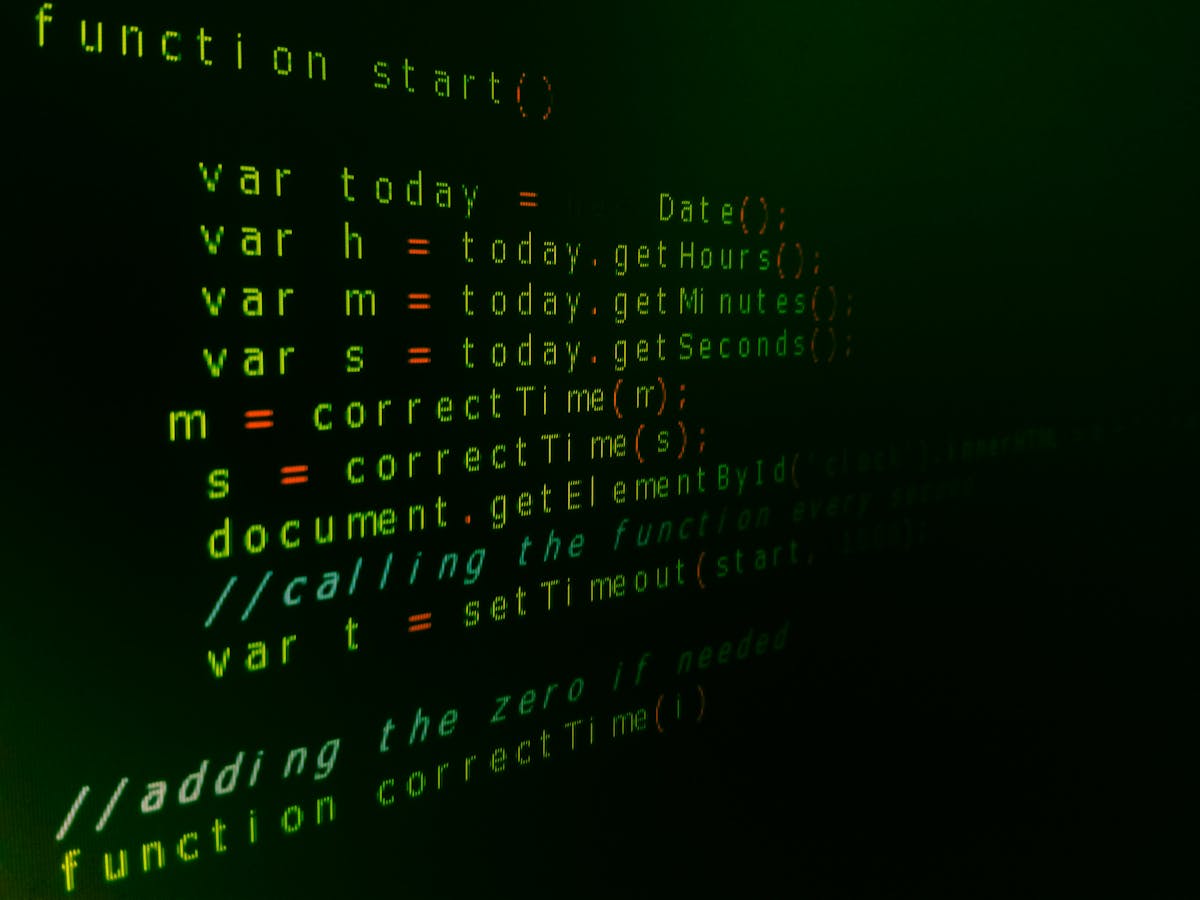Everything About Full-Stack Growth: Exploring Its Duty in Effective Software Engineering
Full-stack development has become a foundation of contemporary software program engineering. By incorporating front-end and back-end innovations, it develops cohesive internet applications. This method not only boosts interface but additionally enhances server-side capability. As the demand for versatile developers boosts, understanding the subtleties of full-stack advancement comes to be necessary. Exactly what does this include, and what ramifications does it hold for the future of software program engineering?
Comprehending Full-Stack Growth
Full-stack growth encompasses the total range of internet growth, integrating both front-end and back-end innovations. This multidisciplinary technique permits programmers to create fully practical internet applications, taking care of everything from user interface style to web server management. Full-stack designers possess a varied skill collection, allowing them to browse numerous layers of an application, consisting of data sources, server-side reasoning, and client-side interactions.Understanding the full-stack growth procedure entails identifying the relevance of customer experience and application efficiency. Programmers must consider how these elements interact, guaranteeing a seamless experience for users. Additionally, full-stack development fosters cooperation amongst groups, as programmers can interact successfully throughout self-controls. niels denekamp aether. This flexibility not only improves operations yet likewise improves problem-solving capacities. In a significantly electronic world, the demand for full-stack programmers proceeds to grow, highlighting their pivotal role in the software program design landscape
Key Technologies in Full-Stack Development
The landscape of full-stack growth is specified by a variety of key innovations that empower programmers to develop robust internet applications. On the front end, prominent frameworks like React, Angular, and Vue.js promote the development of dynamic interface. These tools allow programmers to produce responsive layouts and enhance user experiences.On the backside, Node.js, Django, and Ruby on Bed rails are commonly used for server-side growth, allowing efficient handling of data source interactions and web server logic. Databases such as MongoDB and PostgreSQL are crucial for data storage and retrieval.APIs are essential in linking the front end and back end, permitting seamless data exchange. In addition, version control systems like Git are vital for managing code modifications and cooperation among advancement groups. Jointly, these technologies develop an extensive toolkit that makes it possible for full-stack developers to deliver high-grade applications efficiently.
Benefits of Being a Full-Stack Designer
A job as a full-stack developer uses countless benefits that appeal to both beginners and experienced specialists. One substantial benefit is the flexibility to service both front-end and back-end innovations, permitting programmers to create all-encompassing services. This double ability collection improves analytical abilities, allowing them to attend to concerns throughout the whole pile efficiently.Additionally, full-stack designers commonly appreciate better work possibilities, as their varied skills make them useful possessions to business seeking to improve development processes. The ability to understand and manage whole tasks promotes enhanced collaboration within teams, bring about an extra natural workflow.Moreover, full-stack designers tend to command greater incomes due to their extensive knowledge. Continuous learning is an additional perk, as they often engage with numerous modern technologies and frameworks, keeping their abilities appropriate. Ultimately, the duty of a full-stack designer is dynamic and fulfilling, supplying a satisfying profession course for those that embrace it.
The Full-Stack Growth Process
While steering with the full-stack development procedure, developers participate in a series of organized phases that assure the development of durable applications. Demands celebration is essential, as it lays the foundation for comprehending user demands and project goals. This More Info is followed by creating the application style, where the general framework, technologies, and frameworks are picked to fulfill the requirements.Next, designers change to the front-end and back-end advancement stages, where they create individual interfaces and server-side reasoning, specifically. Testing is an essential phase that validates safety and security, performance, and functionality, resolving possible bugs and issues before deployment.Finally, the implementation stage entails releasing the application and checking its efficiency in a live environment. Throughout this comments, version and process loops are crucial, allowing for continuous improvement and adaptation to transforming requirements. This structured approach helps with the development of effective, scalable, and maintainable applications.

Partnership In Between Front-End and Back-End Teams
Reliable cooperation in between front-end and back-end groups is essential for successful full-stack development. Strong communication, using shared tools and technologies, and nimble partnership methods can substantially boost operations and task end results - aether group dubai. By cultivating a natural working partnership, groups can better align their efforts and deliver a smooth customer experience
Relevance of Interaction
Successful partnership between front-end and back-end teams depends upon clear and regular interaction. This communication is important for aligning task objectives, assumptions, and timelines. When front-end developers recognize the back-end design and vice versa, they can create more natural and practical applications. Routine meetings and updates facilitate the exchange of concepts, permitting teams to address possible problems early in the advancement process. In addition, efficient communication cultivates a joint atmosphere, encouraging employee to share insights and feedback, inevitably causing innovative solutions. By focusing on communication, teams can decrease misconceptions, enhance operations, and boost general performance. The duty of communication in full-stack advancement can not be overemphasized; it serves as the foundation of effective software design tasks.
Shared Tools and Technologies
Clear interaction establishes the stage for using common devices and innovations properly in full-stack development. This partnership in between front-end and back-end groups rests on the fostering of incorporated tools that improve operations and boost productivity. Version control systems, such as Git, assist in smooth collaboration by allowing designers to track adjustments and combine code efficiently. APIs offer as an important bridge, allowing front-end and back-end elements to communicate effectively. In addition, common advancement atmospheres, like Docker, foster uniformity, allowing groups to work in an uniform arrangement. By leveraging these shared tools, teams can lessen misconceptions and accelerate the advancement process, inevitably bring about even more cohesive software program options that fulfill task demands and individual assumptions.
Agile Partnership Practices

Typical Challenges in Full-Stack Growth
What challenges do full-stack designers come across as they navigate the intricacies of both front-end and back-end innovations? One prominent obstacle is the rapid advancement of devices and frameworks, which calls for continuous learning and adaptation. Programmers need to stay updated with both front-end collections, such as React or Angular, and back-end technologies like Node.js or Django, which can bring about skill gaps or expertise overload.Additionally, full-stack designers commonly fight with work management as a result of the comprehensive series of responsibilities. Stabilizing jobs between customer interface design, server-side reasoning, and data source management can cause time restraints and project delays.Collaboration and interaction within groups also present difficulties, as full-stack developers need to link the gap between front-end and back-end groups, ensuring positioning on task objectives. Debugging across several layers of the pile can make complex concern resolution, eating valuable time and resources.
The Future of Full-Stack Growth
Advancement in innovation assures to form the future of full-stack advancement significantly. As firms significantly adopt cloud computer and microservices architectures, the demand for full-stack designers who can perfectly integrate front-end and back-end technologies is anticipated to grow. The rise of expert system and artificial intelligence will likely influence advancement practices, allowing much more effective coding and automated screening processes.Moreover, the introduction of low-code and learn this here now no-code platforms might redefine the function of full-stack developers, enabling them to concentrate on higher-level style and architecture while streamlining regular tasks great site (niels denekamp aether). This change can promote cooperation in between technical and non-technical staff member, expanding the range of full-stack development.Additionally, the focus on cybersecurity will cause the assimilation of safety and security practices within the full-stack advancement lifecycle. In general, the future of full-stack growth shows up bright, defined by continual discovering and adaptation to an ever-changing technological landscape
Often Asked Concerns
What Educational Background Is Preferred for Full-Stack Developers?
The recommended academic history for full-stack programmers commonly includes levels in computer system scientific research or software design. Numerous effective designers also emerge from coding bootcamps or self-taught experiences, highlighting practical abilities over official education.
Exactly How Do Full-Stack Programmers Stay Upgraded With New Technologies?
Full-stack programmers remain updated with new modern technologies through constant discovering using online courses, going to workshops and meetings, engaging in community online forums, adhering to sector blog sites, and experimenting with new tools and frameworks in personal jobs.
Is Full-Stack Advancement Suitable for Beginners?
Full-stack advancement can be appropriate for newbies, as it supplies an extensive understanding of both front-end and back-end innovations. Nevertheless, the discovering curve may be steep, requiring commitment and constant practice to master various skills.
What Are Usual Occupation Paths for Full-Stack Developers?
Usual job paths for full-stack designers include functions such as software application engineer, web developer, technical lead, and task supervisor. Numerous also focus on certain modern technologies or change right into associated fields like item management or individual experience design.
Exactly How Does Full-Stack Growth Differ From Standard Software Program Growth?
Full-stack growth includes both front-end and back-end jobs, enabling developers to take care of entire projects. On the other hand, typical software program growth usually includes customized duties, focusing individually on either client-side or server-side elements of applications. Full-stack development includes the total spectrum of internet growth, incorporating both front-end and back-end technologies. Full-stack designers have a varied skill collection, enabling them to browse numerous layers of an application, including data sources, server-side reasoning, and client-side interactions.Understanding the full-stack growth procedure involves acknowledging the significance of customer experience and application efficiency. In addition, full-stack advancement cultivates collaboration amongst teams, as programmers can interact effectively throughout techniques. The landscape of full-stack development is specified by a selection of essential innovations that equip developers to build durable internet applications. While navigating via the full-stack growth process, programmers engage in a series of organized stages that guarantee the development of durable applications.